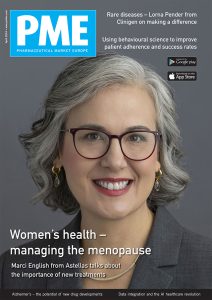Communicating the prevention message by Tam Fry
December 14, 2015 | BMI, National Obesity Forum, child obesity, childhood obesity, obesity, overweight, prevention, weight loss
Tam Fry, spokesperson of the National Obesity Forum, discusses how prevention is key to tackling the childhood obesity epidemic in the UK.
In its reaction to the latest National Child Measurement Programme [NCMP] figures, the Infant & Toddler Forum is quite right that the government must concentrate on preventative measures to prevent obesity. As far as I am concerned, “measures“ is the key word since Whitehall has consistently failed to demand any kind of child measurement which would help to check that children don’t stray from a healthy weight. The Forum itself said as much when launching its Open Book on Growth in (ITF 2007) and it must be clear to both of us that the UK has a childhood obesity epidemic significantly because of this. At the National Obesity Forum, we are constantly communicating in the media, offering solutions to prevent obesity in the future. But it is a message that is taking a long time to get through.
It is high time that a national assessment protocol was put in place.It is vital that children are routinely measured from birth to maturity. This will identify, as early as possible, any signs of excessive weight gain as directed by the Chief Medical Officer for England, Sir Liam Donaldson as long ago as 2003. If they show such signs of excessive weight gain, a programme similar to UCL Institute of Child Health’s,“Trim Tots”, should then be immediately implemented to bring them back to a regular weight. It is ludicrous to wait until children are demonstrably overweight / obese before resorting to a weight-loss programme as happens today. When that scenario is followed, it is much harder to achieve the desired result. Prevention is ALWAYS better, easier – and cheaper – than cure. But how do we communicate the prevention message?
We have made it clear in our communications that all children should be measured throughout their
growing years until it is clear that they are so healthy that the protocol can be discontinued. Measuring should begin with weight and length being assessed in the first year of life whenever standard health reviews and immunisations are carried out. At the age of two (the integrated review) height and weight should be recorded and BMI calculated, and this should be repeated yearly until school entry. I am convinced that a significant proportion of children would then not be numbered amongst the shocking 21/9% who are overweight/obese by the time they get to Reception.
BMI should then be assessed annually through primary school, again to see that many more are not counted in the 33.2% who have put on yet more weight by the time they are ten. It will be a tragedy if the Prime Minister’s strategy to tackle childhood obesity [expected in the New Year] does not include this provision. A House of Commons Health Select Committee Health first recommended this in 2004 and surely its message must now be heeded.
Remember that overweight/obesity also affects some 37.5% of teenagers so assessing BMI annually at secondary school is also warranted. If that sounds a lot, remember too that their weight gain doesn’t stop there. The fact that 63% of UK adults are overweight is chilling. We have to do everything reasonable dramatically to reduce that figure.
Author:
Tam Fry, Honorary Chairman, Child Growth Foundation. Tam has spoken for children with growth problems since 1977. Initially, he tried to balance medical lobbying with his day job as a BBC Television producer but succumbed to the unequal struggle in 1988 and became involved full time with the charity.
In 2005 he joined the Board of the National Obesity Forum and is now their spokesperson.
This content was provided by Say Communications
Company Details
Latest Content from Say Communications
Stick or twist? The future of HCP engagement
The Covid-19 pandemic forced companies to be more agile and rethink their value offering when engaging with HCPs, but what does the future of HCP engagement look like?
Stick or twist? Looking at the patient experience as we emerge from the COVID pandemic
The pandemic has given us a glimpse (actually, more of a very long look) at an alternative way of receiving healthcare and engaging with the NHS. And that alternative fits...
Stick or Twist? Healthcare brands in a (post) COVID-19 world
How have our perceptions of healthcare brands and our purchasing habits changed during the COVID-19 pandemic?
The impact of 5G on digital marketing
Excitement around the next generation of internet connectivity is mounting, as it promises to revolutionise the way we interact with the world. The question for communications professionals is what will...
COVID-19 is redefining the value of ‘critical jobs’: An opportunity for social care?
Despite the varied and rewarding nature of a job which makes a real difference to the lives of adults from a range of backgrounds every single day, it is fair...
How to keep your weight under control during lockdown
One nightmare scenario would be if we all get to the end of lockdown with our sanity but then find that we are too fat to get out of the...
Brands stepping up to show solidarity during COVID-19
The brands that are stepping up to show solidarity during COVID-19 will be those that are remembered long after pandemic passes.
HARNESSING TECHNOLOGY TO TRANSFORM HEALTHCARE IN THE DIGITAL AGE
THE IMPACT OF TECHNOLOGY IN HEALTHCARECutting-edge technology is rapidly changing the healthcare landscape. When you look closely at the rate and level of innovation brought about by tech over the...
Language barriers: Obesity has become a loaded word
We have a worldwide ‘obesity crisis’. Everyone knows this; obesity is in the news almost every week for one reason or another, but what we seem less sure of is...
All Change: The Challenges of Embracing a Plant-Based Diet
Rick Wilson – Director of Nutrition and Dietetics at Kings College Hospital for 30 years up to his retirement in 2015, BSc. RD (retired) – looks at some of the...





